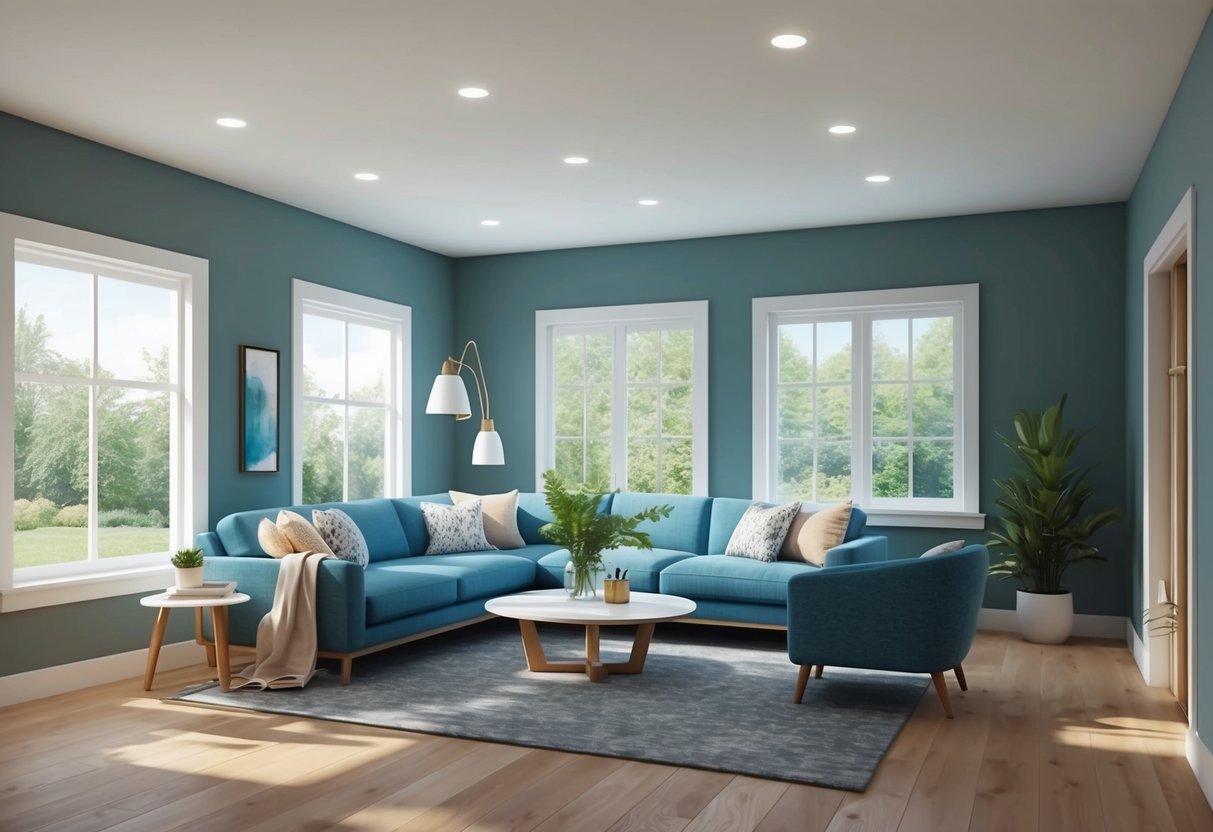
Best Practices for Appliance Use
Energy-efficient appliances will only reach their full potential if operated with best practices in mind. Running laundry or dishwashing machines only with full loads, using cold water settings, and taking advantage of energy-saving cycles are simple habits that improve efficiency.
It’s also important to unplug small kitchen gadgets and electronics when not in use, as many continue to draw power in standby mode. Consider using smart power strips to cut off phantom energy.
Timing matters as well. Running large appliances like dishwashers or dryers during off-peak hours can help reduce demand on the grid and minimize costs.
Keeping refrigerator coils clean and performing regular maintenance on HVAC systems can further enhance savings, as noted in various energy-saving home improvement ideas.
Optimizing Home Lighting for Efficiency
Updating home lighting can reduce energy consumption and make living spaces more comfortable and inviting. Efficient lighting solutions lower utility bills and decrease the home’s environmental impact.
Switching to LED Bulbs
Replacing traditional incandescent bulbs with LED bulbs is one of the most effective ways to boost a home’s energy efficiency. LEDs use up to 75% less electricity and last significantly longer than conventional options.
This means fewer bulb changes and less maintenance over time. LED bulbs produce less heat, reducing the need for cooling.
They are available in a range of color temperatures, designs, and brightness levels. Many are also compatible with dimmer switches and smart lighting systems.
Switching to energy-efficient lighting like LEDs can cut lighting energy use by about 15% in the average home. Households benefit from improved light quality and lower replacement costs.
For those looking to make an immediate impact, consider upgrading to LED lighting in high-use areas such as kitchens, living rooms, and outdoor spaces.
Maximizing Natural Light Indoors
Maximizing natural light reduces the need for electric lighting during daylight hours. Design choices such as large, well-placed windows, skylights, and glass doors can bring in more sunlight and make indoor spaces feel brighter.
Homeowners can enhance daylighting by using light-colored paints, reflective surfaces, and strategically placed mirrors to spread sunlight throughout rooms. Keeping windows clean and removing heavy drapes allows for maximum sunlight entry.
Efficient window treatments such as blinds and sheer curtains give occupants control over glare and privacy while still letting in daylight. Arranging workspaces and living areas closer to windows further decreases reliance on artificial lighting.
Harnessing Solar Power for Residential Use
Solar power offers a practical way to reduce household energy consumption and utility costs. Homeowners can take actionable steps to assess if their property is suitable for solar and how best to integrate new systems with their current home setup.
Assessing Your Home’s Solar Potential
Before installing solar panels, it’s crucial to evaluate the amount of sunlight the property receives throughout the year. Factors such as roof orientation, angle, and shading from trees or nearby buildings will directly impact potential energy yield.
South-facing rooftops usually deliver the highest solar gain, especially if they have a minimal pitch and no obstructions. Many homeowners use online solar evaluation tools or consult with solar professionals for a tailored site analysis.
This review includes measuring roof size, inspecting structural integrity, and estimating solar irradiation. Consideration must also be given to local regulations, permitting requirements, and incentives, such as tax credits or rebates, to optimize return on investment.
For more on evaluating solar gain, see this solar gain assessment guide.
Integration With Existing Home Systems
After confirming solar viability, integrating solar technology with current home energy systems is a top priority. Solar panels are installed and connected to either the home’s electrical grid or battery storage units.
This enables the homeowner to use solar-generated electricity directly, store excess energy, or even feed it back to the grid. A well-planned integration considers compatibility with existing HVAC, hot water systems, and overall energy needs.
Modern solar inverters can often be synced with smart home energy management systems, allowing for efficient control and monitoring. Upgrades such as energy-efficient appliances further reduce demand, maximizing the benefits of solar investment.
Explore ways to streamline this integration at energy-efficient upgrade solutions.